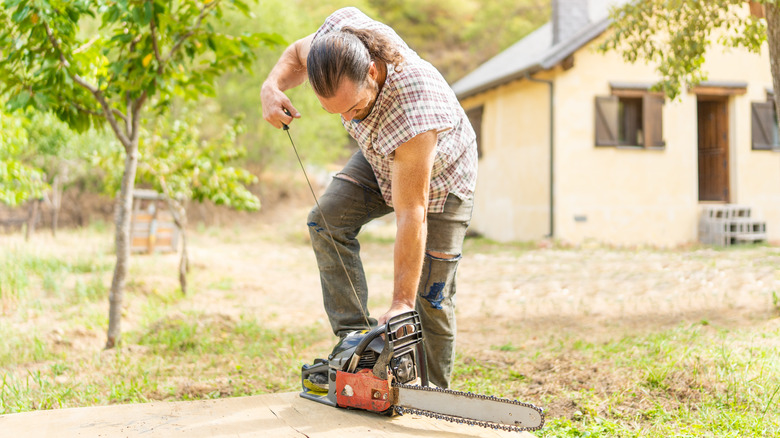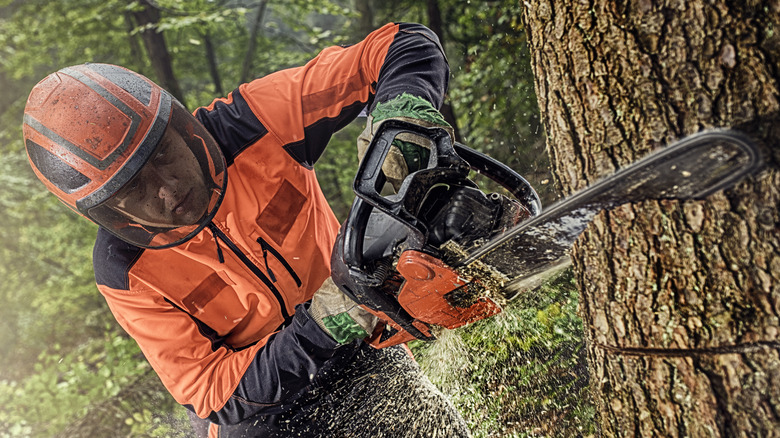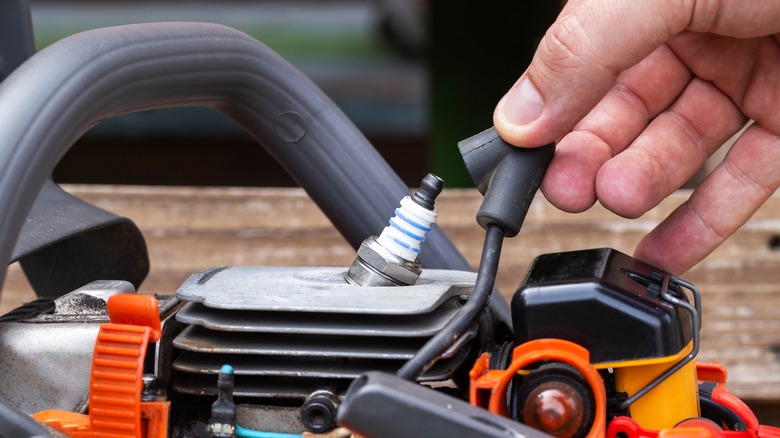What To Try If Your Chainsaw Won't Start
So let's assume you've considered all the key questions when choosing a chainsaw, and because you have a whole lot of big logs to cut for firewood or you have trees in your yard to take down, you've chosen a powerful gas model. But now your chainsaw won't start, which is likely to be driving you nuts. However, don't take it to the repair shop until you've tried a trick the professionals use.
Before we get to that, it helps to understand what's going on and a common problem that can be avoided. When you pull the starter cord on a chainsaw, one of the things that happens is that the piston moves up the cylinder, creating compression. The larger the engine, the more effort is needed to do this. Several manufacturers include a decompression button that is supposed to make life easier, but some professionals think these can lead to flooding. If that happens, you need to take the spark plug out, let some of the gas evaporate, put the spark plug back, and then go through the whole starting process again. Not fun at all.
It shouldn't be necessary. Anyone with average physicality should be able to start these tools. In many cases, it's a question of technique.
The pro trick to starting any gas chainsaw more easily
A quick note about proper chainsaw safety before we go on. When starting your chainsaw, always put it on the ground and put your foot through the handle. Never try to start a chainsaw standing upright with it held in one hand. You don't have full control, and there's a real danger of a serious accident.
The pro trick to getting your chainsaw going is to overcome the first compression cycle before you go for the full-on starting effort. That might sound complicated, but it's actually very straightforward. When you pull the cord you will feel moments when there is extra resistance. It happens a couple of times as you pull the cord all the way out. The first one is key.
To start the chainsaw, apply the choke but do not turn it on yet. Give the cord two or three steady pulls. This primes the engine. Then turn the chainsaw on and pull the cord gently past that first compression point. Now it's time for the starter stroke. Give the cord a good, solid pull the rest of the way. A steady idling sound should tell you that you've been successful. As with any new technique, it might take a couple of tries to get the hang of it. A firm pull is important but you don't need to be so aggressive that you're trying to rip the cord right out of the machine.
Other simple fixes to get your chainsaw started
It's always possible that there is a problem that's unrelated to starting technique. If your chainsaw is still relatively new and it refuses to start, then go ahead and return it to the retailer. If it's under warranty, they should either fix it or replace it.
If it's an older model or out-of-warranty, there are a few things you can try without taking the whole machine to pieces. If it has been sitting in a shed or garage for a few months, then stale fuel could be the problem. Many people don't know that gas can go bad, so try draining the tank and using fresh fuel. Blockages in air or fuel filters can cause problems, and checking or replacing these isn't complicated or expensive. Also, take a look at the spark plug; If it's oiled-up, rusted or damaged, replace it.
If you've tried all of these and your chainsaw still won't start, it could be a problem with the carburetor. These are complicated devices, so unless you are an experienced mechanic, that one is probably best left to a professional.


